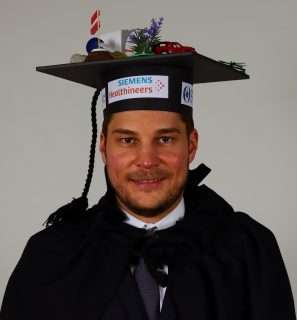Manuel Schneider
Quantitative Biomarkers for Abdominal Magnetic Resonance Imaging
The global prevalence of various metabolic pathologies, such as the metabolic syndrome, obesity, diabetes or nonalcoholic fatty liver disease (NAFLD) has increased steadily in recent decades, and takes on the proportions of a worldwide epidemic. It is therefore important to understand background and pathogenesis of these disorders to reverse this trend. In the last years, research in Magnetic Resonance Imaging (MRI) focused on the extraction of quantitative biomarkers from qualitative MR image data, which allows to quantitatively estimate relaxation properties or signal ratios in the form of parameter maps. Quantitative MRI (qMRI) techniques are accompanied by the promise of earlier disease detection and better grading and staging of diseases. Since MRI is a non-invasive and non-ionizing modality, it allows large-scale research studies and clinical assessment. Widespread clinical adoption of qMRI for the investigation of the described disorders is still limited. Conventional methods suffer from lengthy scan times and motion sensitivity, since a number of images have to be acquired and since often Cartesian sequences are applied. In the abdomen this is challenged by respiration, which is why data is typically acquired during breath-holding. Moreover, currently applied biomarkers are limited in terms of their significance for the prediction of disease states. This work includes techniques for the MRI-based estimation of a new biomarker called triglyceride saturation state, which potentially gives more insights into the pathogenesis of metabolic abnormalities or the risk of breast cancer development. To this end, two methods are proposed that calculate 3-D parameter maps of the relative fractions of saturated, mono-unsaturated and poly-unsaturated fatty acids with regard to the total fat content. Both techniques efficiently sample Cartesian multi-echo gradient-echo (GRE) data using bipolar readout gradients and apply low-rank denoising before parameter estimation. Phase errors are either addressed analytically using an eddy-current phase parameter, or by applying novel echo-dependent phase maps. In vitro, the developed methods yielded accurate and reproducible results across different protocols. In vivo, applicability was assessed using measurements in healthy volunteers and patients in the clinical sites abdomen and breast. Moreover, two methods that allow proton-density fat fraction (PDFF) and R2* quantification during free-breathing are proposed. A motion-robust radial stack-of-stars sequence is applied, and iteratively reconstructed using a model-based technique that combines Parallel Imaging (PI) and Compressed Sensing (CS). The developed approaches are capable of estimating self-gated respiratory motion-averaged and motion-resolved parameter maps from undersampled as well as fully-sampled data. Compared to a conventional state-of-the art technique, the motion-averaged reconstruction achieved accurate PDFF values, and the motion-resolved reconstruction accurate PDFF and R2* results in n = 14 patients enrolled in a hepatobiliary research protocol. For patients unable to suspend respiration, the developed methods are promising alternatives to conventional techniques, which typically apply motion-sensitive Cartesian sequences and sample data during breath-holding. In summary, in this work relevant contributions are made to the fields of fat quantification, fatty acid composition calculation and R2* estimation. The proposed techniques address currently existing limitations in the field of qMRI for imaging various disorders in the abdomen.
